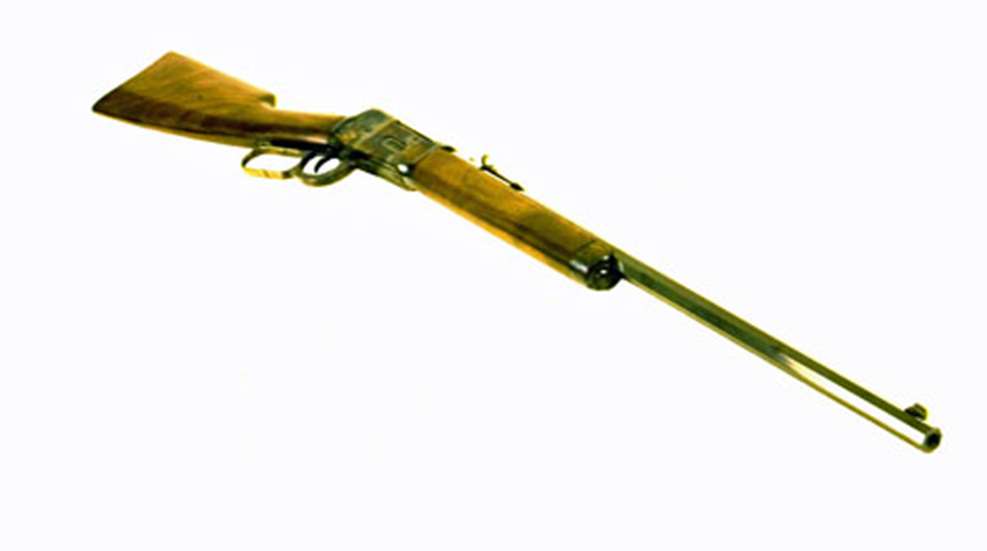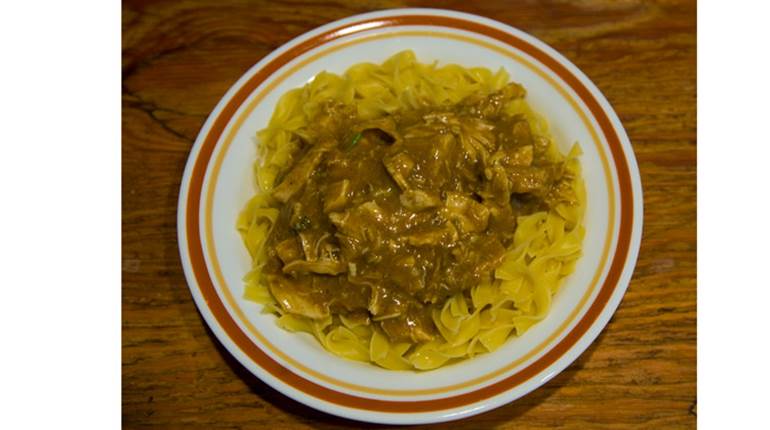
Let’s go back 120 years to 1894, when John Moses Browning was at the pinnacle of his fertile developmental mind. He had improved the lever-action rifle to be easier to manufacture, while at the same time capable of handling some of the most powerful cartridges of the time with the Model 1886. Then he turned around and scaled the rifle down in 1892 to handle popular pistol cartridges. A year later he introduced a pump-action shotgun. Winchester recognized that if Browning invented a firearm it would sell-and sell well. The ammunition division of Winchester began loading cartridges with a new-fangled smokeless powder in 1893 as well. This powder wasn’t as corrosive as the old blackpowder and contained more energy than an equal mass of the charcoal-sulfur and saltpeter concoction. It made it possible to launch smaller bullets at heretofore unheard of velocities, flattening trajectories and enabling hunters and shooters to take big-game animals or hit targets at much longer ranges.
Browning was then tasked with developing a rifle capable of being chambered for mid-sized cartridges of higher breech pressure. The new rifle needed to be simpler to manufacture as well. Browning came up with a way of having a single locking lug positioned transversally, as opposed to the pair of locking lugs in the ’86 and ’92 models. On August 21, 1894 Browning obtained patent number 524702 for the rifle, and by November the first Model 1894 Winchester rifles were made available to the public.
Winchester began working on making nickel-steel barrels for the new ’94 that could handle the equally new smokeless powders but it wasn’t a simple task. For this reason the initial cartridges chambered in the ’94 were blackpowder .32-40 and .38-55 rounds. By mid-1895 the nickel-steel barrel issues had successfully been addressed and Winchester introduced its first smokeless powder sporting cartridge-the .25-35 Winchester Center Fire (WCF)-in the ’94. A few months later they expanded the neck of the .25-35 to .30 caliber, and the .30-30 Winchester was born.
To say the ’94 was an instant success would be an understatement. The West may have largely been settled, but there was still plenty of wild country out there, and farmers and settlers still needed to feed and protect their families. The ’94 was relatively light; it handled well, either in the hands of a hunter or in the saddle scabbard of a cowboy.
The 1 millionth Model ’94 was made in 1927 and presented to President Calvin Coolidge. By 1948, another 500,000 ’94s had been made and the 1 1/2 millionth rifle went to President Harry Truman; President Dwight Eisenhower was presented with the 2 millionth ’94 in 1953. Sales continued to soar throughout the 1950s.
John Olin started as a chemical engineer in his father’s business, the Western Cartridge Company. When Western bought the Winchester Repeating Arms Company in 1935, Olin was made first vice-president and headed up the Winchester Division. Olin had a passion for firearms and holds 24 patents regarding firearms and ammunition manufacturing. Eventually he rose to president and Chairman of the Board of the Olin Corporation. Under his leadership Winchester reached its pinnacle in terms of design and workmanship of firearms. When he retired in 1963 the new leaders of Winchester decided to make the company’s line more profitable. More bean counters than gun people, they were fixated on dollars rather than guns.
In 1964, this new management team jettisoned the forged steel receivers of the ’94, replacing them with ones made of sintered steel. Other internal parts heretofore forged were also made of sintered steel or stamped out of sheet steel. Solid steel pins were replaced with cheaper hollow roll pins. The rifle’s performance had not been compromised, but its aesthetics were terrible. Sintered steel came out purple when subjected to the traditional bluing process. Cheaper grades of walnut were also slipped into the production line. The iconic Winchester Pony Express rider logo was effectively given a hair shirt for compromising quality in the interest of profitability. This is what gave rise to the pre-’64 versus post-’64 nomenclature, with premium prices attached to the older guns.
Shooters and hunters are always trying to meld new technologies to their guns. Bill Weaver had perfected the 3-30 scope in 1930, making the optical sight available to the working man for the sum of $19. These scopes were just the thing for the bolt-action rifle, but they were difficult to mate up with the ’94. There were two problems-actually in my mind three-scoping a ’94. Both related to the top ejection of the rifle. The extractor was positioned at 12 o’clock on the bolt face, and the ejector was at 6 o’clock. Spent cartridges therefore came straight up out of the receiver. The only place to mount a scope was on the left side of the receiver. For a time a scope mount was made that placed the scope on the left side of the rifle. Called an offset mount, it was a pain to sight in and left the shooter with but one yardage where the scope would be effective. My own notion of a third problem with scoping a ’94 is that it destroys the handling characteristics of the rifle. The most popular cartridges for this rifle are .30-30, .32 Winchester Special and the .25-35 WCF-all are pretty much limited to 200-yard shots. If a shooter’s eyesight is so bad that he feels the need for a scope, most could be satisfied with a peep sight, and the lines and handling characteristics would be preserved.
Nonetheless, many shooters want a scope, and in 1982 the U.S. Repeating Arms Co. (USRAC)-a coalition of Winchester employees who purchased the manufacturing rights of Winchester products from Olin-offered the Model ’94 with a new Angle Eject feature. The Angle Eject capability was accomplished by moving the ejector to a position toward the left side of the receiver and opening up the top a bit for clearance.
Ten years after the Angle Eject, USRAC realized the horrific mistake Winchester made in going with sintered steel parts. Computer Numeric Machining (CNC) was taking over the manufacturing process, allowing for a cost-effective means in producing truly machined parts from bar stock. Solid pins returned to the iconic ’94 and an effort was made to deliver a rifle made like the old ones. But the company-which had been purchased by FN Herstal-could not keep from stepping on its tail again. The Europeans and the lawyers mandated that all firearms should have a manual safety. So the half-cock notch in the hammer was jettisoned and a cross-bolt safety with a large, ugly button with red paint on the side exposed when the safety was off was implemented. Lever-action aficionados howled like stuck pigs, and in 1993, the safety was moved to the tang. But the manual safety would remain because the Europeans deemed it so.
By this time more than 7 million Model ’94s had been made and circulated throughout much of the world. From hard-scrabble dirt farmers to rural sheriffs’ departments to specialized military units, the Model 1894 Winchester made its presence known for more than 100 years.
The Winchester line of quality firearms had withstood several blows that threatened to shut down its operations. John Olin saved the company from the ravages of The Depression. Company employees saved it from the green-eyeshade boys who cheapened the brand in 1964. FN Herstal saved it from the inexperienced management brought on by employee ownership. Increasing costs of labor, materials and a lack of investment in modern technology finally shut the New Haven doors in 2006. We were told the Model 94-along with its equally iconic bolt-action brother, the Model 70-would no longer be produced.
But the marketplace simply would not allow the big red “W” to decay into nothing more than a memory. Negotiations with the Olin Group, which still owns the brand, produced renovation of the original company name-Winchester Repeating Arms-and we began seeing the return of many of our favorite rifles, including the Model ’94.
Today the Model ’94 is made by Miroku in Japan. Those of a jingoistic bent may cry that America’s favorite deer rifle is no longer made on our own soil, but a close inspection of the Miroku guns reveals they are made to a level of quality not seen in New Haven for many years. Whether you want a ’94 as a truck gun, or you pine for some of the more traditional looks and features like crescent buttplates, octagon barrels and color casehardening, there’s still a ’94 made for you. Yes, there is still that damnable tang safety, but, thankfully, it is far less obtrusive than earlier examples. Other than that, these rifles are pure Winchester 94s.
Cabelas recently contracted for a special run of Deluxe Model 94s fitted with a 24-inch octagon barrel and a half magazine. In the early years of its production Winchester accommodated many specially ordered variations of the Model ’94. According to George Madis’ excellent reference for all things Winchester-The Winchester Book-half or non-standard magazines comprised about one in 725 models, making them a relatively rare option. I happen to have one made in 1901, so reviewing the Cabelas’ gun interested me even more.
Chambered in .30-30 Win., the Cabelas’ ’94 features a color casehardened receiver lever crescent buttplate and nose cap on the fore-end. The stock has what I would call A-grade walnut with some figure in it. I ran several factory and handloads through it, including my cast-bullet rabbit load of 15 grains of Trail Boss behind an RCBS 165-grain flat point. Accuracy at 100 yards for the full-power loads was on par with most ’94s-between an inch and 1 1/2 inches. My cast-bullet load is for 25-yard shooting, and it tore a single 7/8-inch hole. MSRP for the Cabelas Model 1894 Winchester is $1,600, but the sale price runs $1,349. Given its yo-yo history, if you want one now would be a good time to get one. I cannot tell you the number of guns I should have bought but didn’t.







































